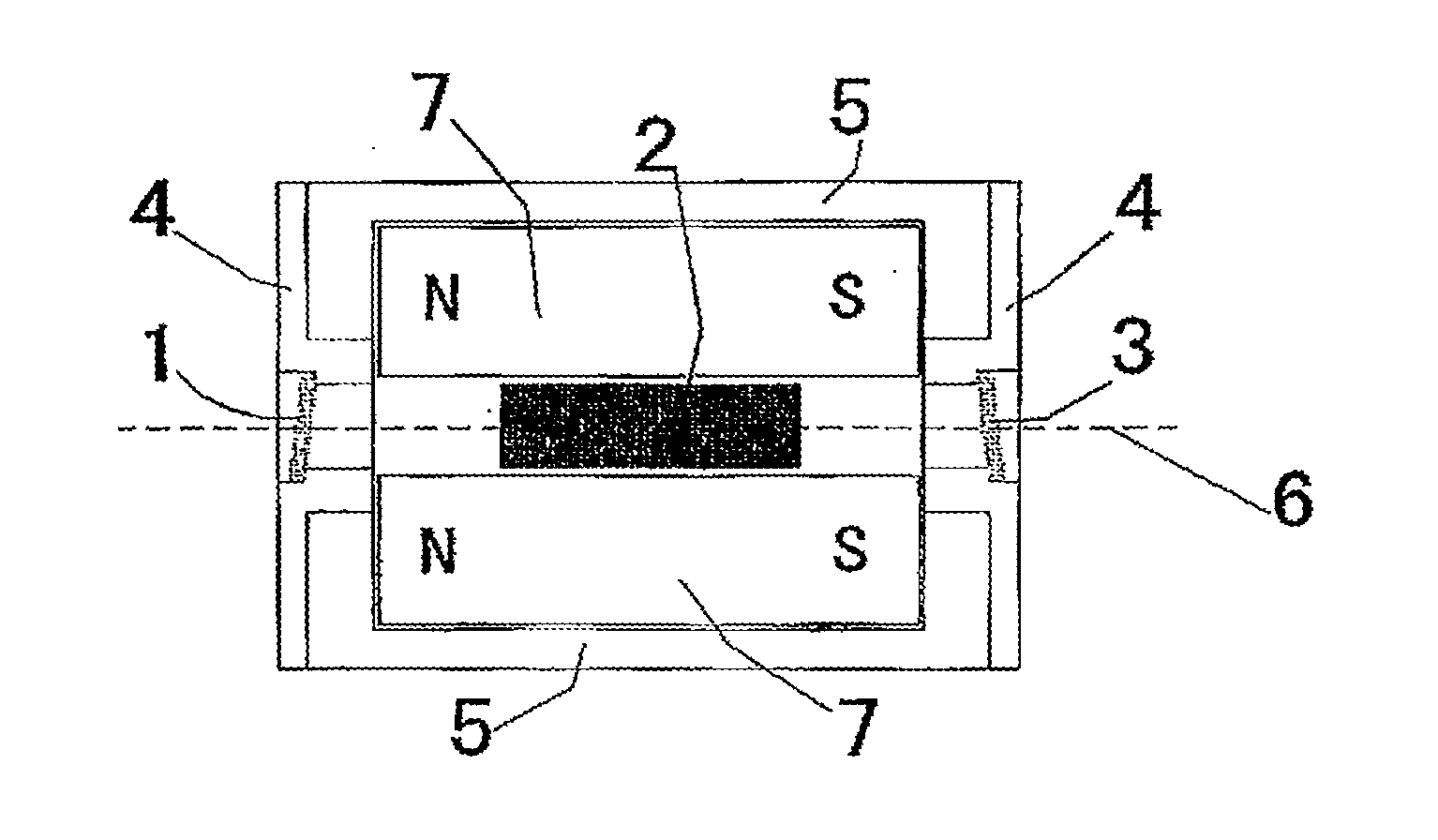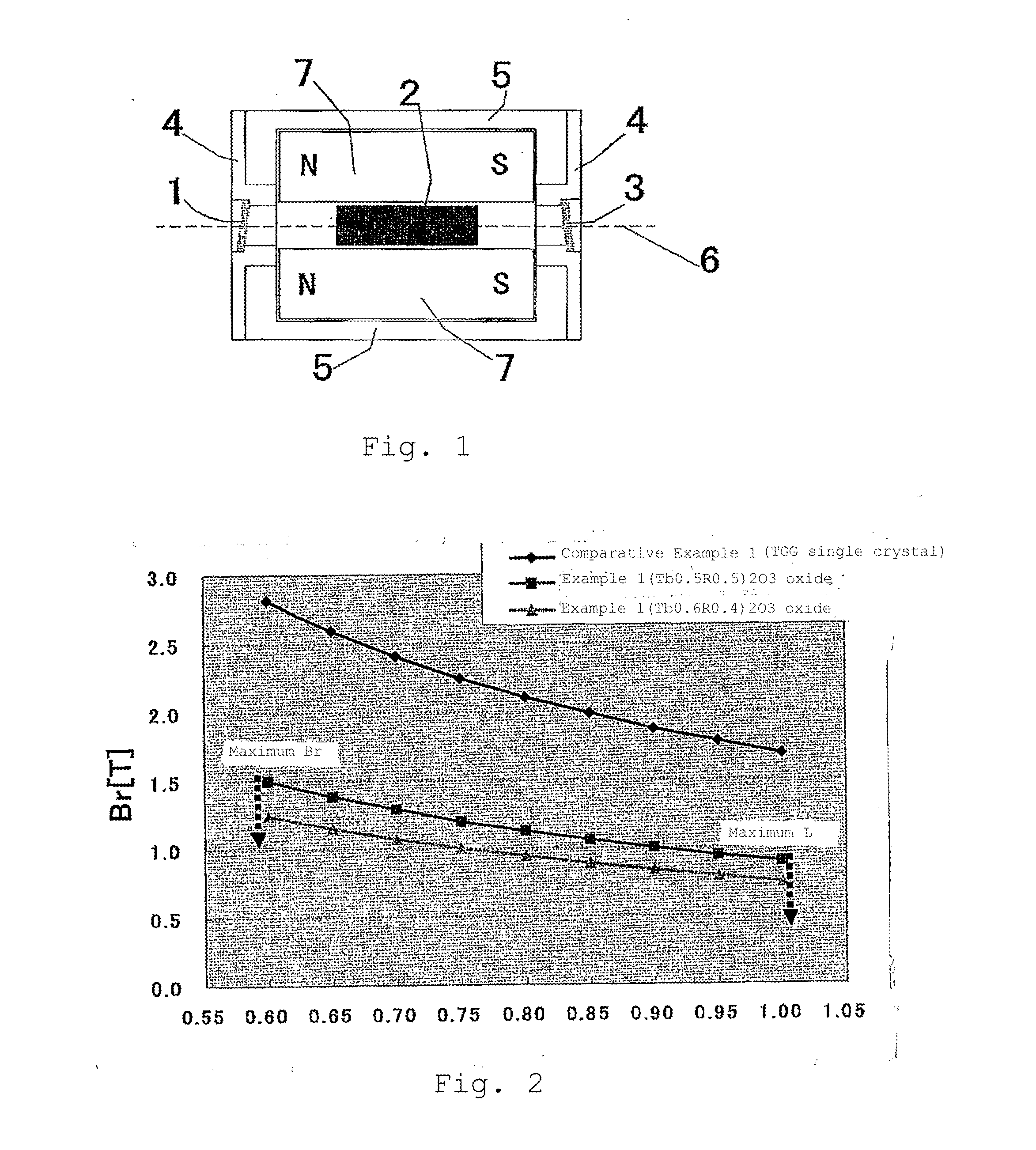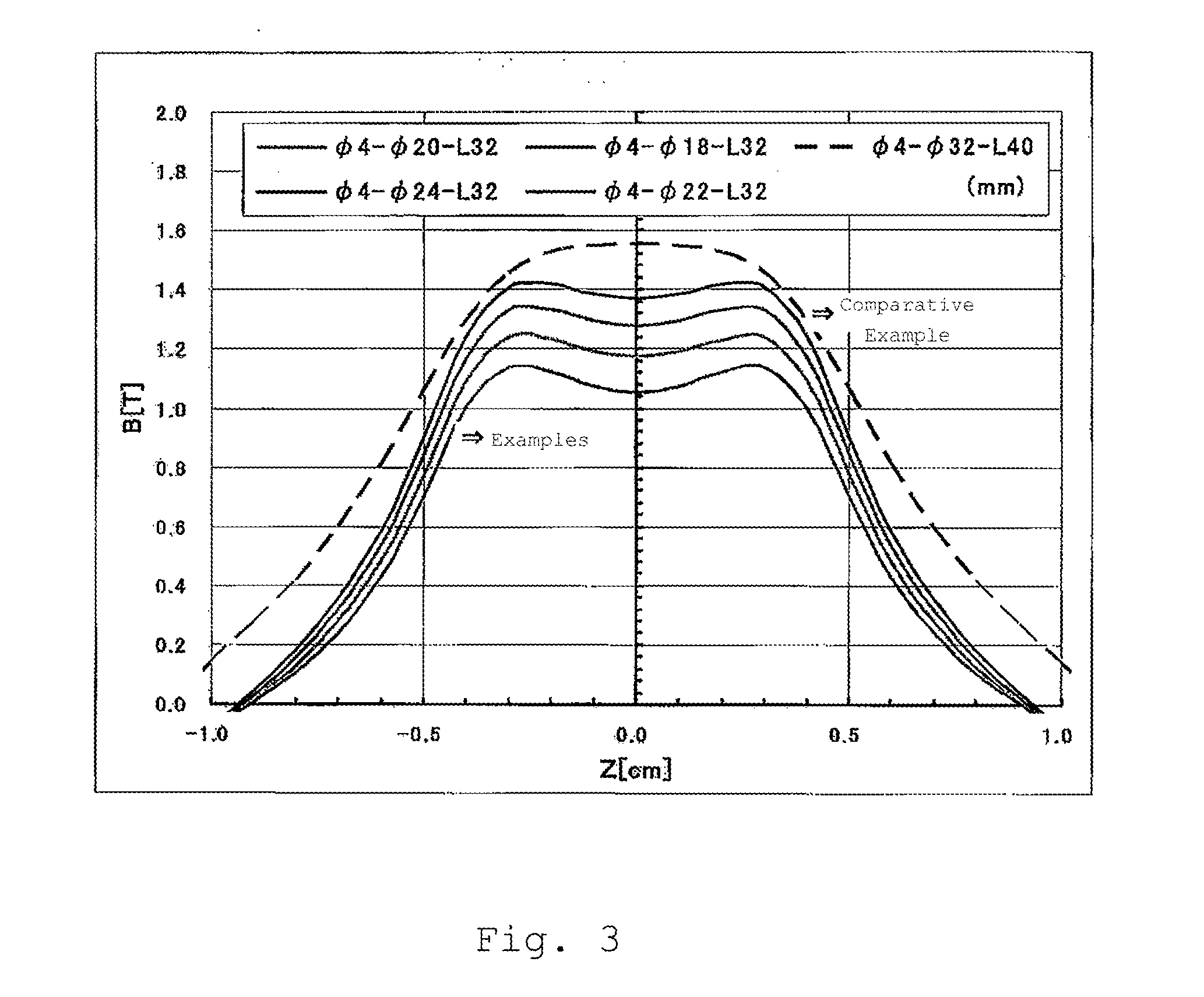Optical isolator
a technology of optical isolators and isolators, which is applied in the field of optical isolators, can solve the problems of inability to meet the needs of the user, the dimension of the optical isolator becomes bulky, and enters an unstable state, so as to reduce the loss of absorption, expand the freedom of spatial dimensioning, and reduce the effect of optical isolator siz
- Summary
- Abstract
- Description
- Claims
- Application Information
AI Technical Summary
Benefits of technology
Problems solved by technology
Method used
Image
Examples
example 1
[0042]In Example 1, an optical isolator of 980 nm band having a structure as shown in FIG. 1 was made. An absorption type glass polarizer having a high transparency and a high extinction ratio in the 980 nm band was used to make an input polarizer 1 and an output polarizer 3, and an antireflective film having a central wavelength of 980 nm was adhered to the beam transmittance face, and in order to prevent the reflected beam from returning from the beam transmittance face to the incident beam path, metallic holders 5 are inserted by bonding them onto a polarizer holder 4, which has a tilt angle of 5 degrees, at the four corners of the bottom face of the polarizer.
[0043]Then, the Faraday rotator 2 was fixed in the middle of the hollow of the hollow magnet 7 after adjusting its position to where the magnetic field distribution created by the magnet becomes greatest. The input polarizer 1 and the output polarizer 3, which are arranged in this progressive order along the progressive pat...
PUM
| Property | Measurement | Unit |
|---|---|---|
| length | aaaaa | aaaaa |
| wavelength | aaaaa | aaaaa |
| insertion loss | aaaaa | aaaaa |
Abstract
Description
Claims
Application Information
 Login to View More
Login to View More - R&D
- Intellectual Property
- Life Sciences
- Materials
- Tech Scout
- Unparalleled Data Quality
- Higher Quality Content
- 60% Fewer Hallucinations
Browse by: Latest US Patents, China's latest patents, Technical Efficacy Thesaurus, Application Domain, Technology Topic, Popular Technical Reports.
© 2025 PatSnap. All rights reserved.Legal|Privacy policy|Modern Slavery Act Transparency Statement|Sitemap|About US| Contact US: help@patsnap.com



